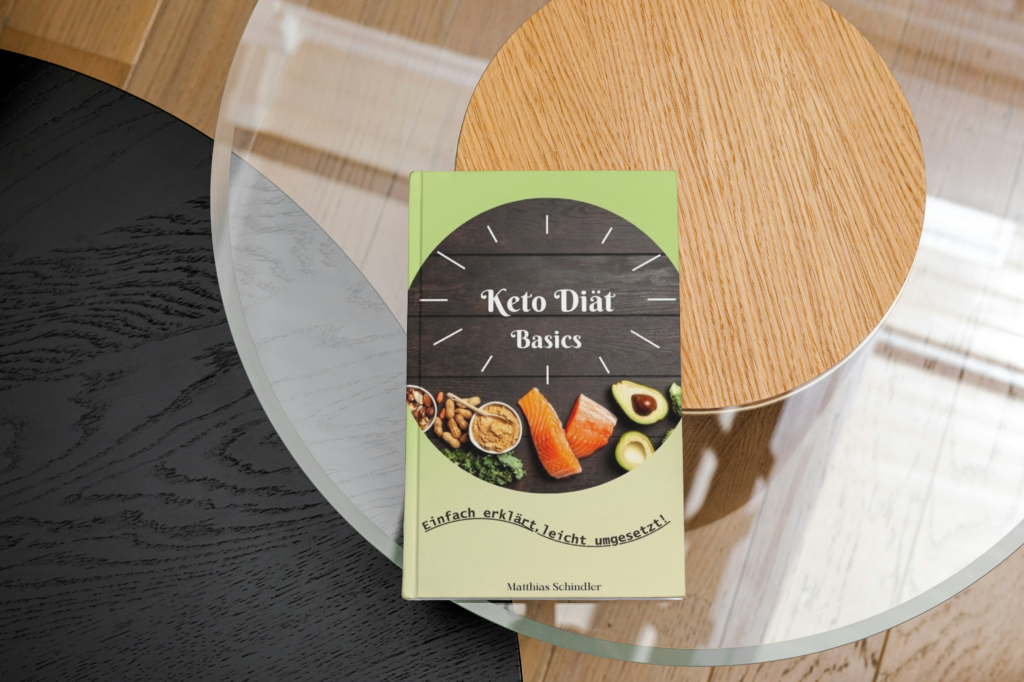
1. Introduction to the Keto Diet
The ketogenic diet, commonly known as the keto diet, is a low-carbohydrate, high-fat eating plan that has taken the health and wellness world by storm. This diet emphasizes drastically reducing carbohydrate intake and replacing it with fat, pushing the body into a metabolic state called ketosis. Initially developed in the 1920s to treat epilepsy in children, the keto diet has since gained popularity for its weight loss benefits and potential positive effects on various health conditions.
The keto diet’s appeal lies in its ability to help individuals shed pounds quickly and efficiently, while also providing other benefits such as improved mental clarity, increased energy levels, and better control over blood sugar levels. With its growing popularity, many people are turning to the keto diet as a way to achieve their health goals, whether it’s losing weight, managing diabetes, or enhancing overall well-being.
2. Understanding the Science Behind Keto
Ketosis Explained
Ketosis is a natural metabolic state in which the body, deprived of its usual source of energy—glucose—starts burning fat for fuel instead. When you drastically cut down on carbs, your body begins to rely on ketone bodies, which are produced in the liver from fatty acids. These ketones then serve as an alternative energy source, powering everything from your brain to your muscles.
The primary goal of the keto diet is to induce and maintain this state of ketosis. This is achieved by adhering to a strict macronutrient ratio: high fat, moderate protein, and very low carbohydrates. Typically, the diet consists of about 70-75% fat, 20-25% protein, and 5-10% carbohydrates.
Role of Macros
Macronutrients—fats, proteins, and carbohydrates—play different roles in the body. On the keto diet, fat becomes the primary source of energy, while protein is essential for muscle repair and maintenance. Carbohydrates, which are usually the body’s go-to fuel source, are limited to a minimal amount, forcing the body to turn to fat for energy.
The high fat intake on the keto diet is crucial. It helps keep you satiated, provides a steady energy source, and supports the production of ketones. Meanwhile, moderate protein intake is necessary to prevent muscle loss and ensure that your body has the building blocks it needs for various functions.
Impact on Body Metabolism
The shift to ketosis changes the way your body functions on a fundamental level. Normally, your body uses glucose from carbohydrates as its primary energy source. However, once you limit carbs and increase fat intake, your body begins to adapt to using fat for fuel. This not only leads to weight loss but also provides a more stable energy level throughout the day, as fat is a more sustainable energy source than carbohydrates.
Moreover, the keto diet has been shown to improve insulin sensitivity, making it beneficial for individuals with type 2 diabetes or insulin resistance. By lowering blood sugar levels and reducing the body’s need for insulin, the keto diet can help manage or even reverse certain metabolic conditions.
3. Keto Diet Guidelines
Daily Macronutrient Ratios
To successfully follow the keto diet, it’s essential to understand and adhere to the correct macronutrient ratios. As mentioned earlier, a typical keto diet consists of:
- 70-75% Fat: This includes healthy fats like avocados, olive oil, coconut oil, and butter.
- 20-25% Protein: Choose moderate amounts of protein from sources like meat, fish, eggs, and dairy.
- 5-10% Carbohydrates: Limit your carb intake to around 20-50 grams per day, focusing on non-starchy vegetables and low-carb fruits.
Foods to Include
On the keto diet, you’ll want to focus on foods that are high in healthy fats, moderate in protein, and low in carbohydrates. Here are some examples:
- Fats and Oils: Avocados, olive oil, coconut oil, butter, ghee, and lard.
- Protein Sources: Beef, pork, chicken, turkey, fish, eggs, and full-fat dairy.
- Low-Carb Vegetables: Leafy greens (spinach, kale), cruciferous vegetables (broccoli, cauliflower), zucchini, and bell peppers.
- Nuts and Seeds: Almonds, walnuts, chia seeds, flaxseeds.
- Dairy: Cheese, heavy cream, Greek yogurt (in moderation).
Foods to Avoid
To maintain ketosis, you’ll need to avoid foods that are high in carbohydrates, including:
- Sugary Foods: Sweets, candy, cakes, and sugary drinks.
- Grains and Starches: Bread, pasta, rice, cereals, and potatoes.
- High-Carb Fruits: Bananas, apples, oranges, and grapes.
- Legumes: Beans, lentils, and chickpeas.
- Unhealthy Fats: Margarine, vegetable oils, and processed foods high in trans fats.
4. Sample Keto Meal Plan
Planning your meals in advance can help you stay on track with the keto diet. Here’s a sample meal plan to give you an idea of what a day on keto might look like:
Breakfast Options
- Keto Omelette: Made with eggs, cheese, spinach, and avocado.
- Chia Seed Pudding: Made with chia seeds, unsweetened almond milk, and a dash of vanilla extract.
- Bulletproof Coffee: Coffee blended with butter and coconut oil for a high-fat start to your day.
Lunch Options
- Grilled Chicken Salad: With mixed greens, olive oil, avocado, and a sprinkle of feta cheese.
- Zucchini Noodles with Pesto: Zoodles topped with a rich, homemade pesto sauce and grilled shrimp.
- Keto Taco Bowls: Ground beef seasoned with taco spices, served over lettuce with cheese, sour cream, and guacamole.
Dinner Options
- Baked Salmon with Asparagus: Served with a side of cauliflower mash.
- Keto Meatloaf: Made with ground beef, pork rinds (instead of breadcrumbs), and a side of roasted Brussels sprouts.
- Stuffed Peppers: Bell peppers stuffed with a mixture of ground beef, cheese, and spices, baked to perfection.
Snack Ideas
- Cheese and Olives: A small platter of your favorite cheeses and olives.
- Nuts and Seeds: A handful of almonds, walnuts, or sunflower seeds.
- Keto Fat Bombs: Small, high-fat snacks made from coconut oil, nuts, and cocoa powder.
5. Tips for Success on the Keto Diet
Meal Planning and Preparation
One of the keys to success on the keto diet is meal planning and preparation. By planning your meals ahead of time, you can ensure that you’re sticking to your macros and not giving in to carb-heavy temptations. Consider preparing your meals in bulk and storing them in the fridge or freezer for easy access throughout the week.
Managing Keto Flu
The “keto flu” is a term used to describe the flu-like symptoms that some people experience when they first start the keto diet. These symptoms can include headache, fatigue, nausea, and irritability, and they usually occur as your body adjusts to burning fat for fuel instead of carbs. To manage keto flu, make sure you’re staying hydrated and replenishing your electrolytes by consuming foods rich in sodium, potassium, and magnesium.
Staying Hydrated
Staying hydrated is especially important on the keto diet, as your body tends to lose water and electrolytes more quickly when in ketosis. Aim to drink plenty of water throughout the day and consider adding a pinch of salt to your meals to help with electrolyte balance.
6. Keto Diet Variations
While the standard keto diet (SKD) is the most common, there are several variations that you can choose from depending on your goals and lifestyle:
Standard Keto Diet (SKD)
This is the most common version of the keto diet and involves maintaining a strict macronutrient ratio of 70-75% fat, 20-25% protein, and 5-10% carbs. It’s ideal for beginners and those looking to achieve steady weight loss.
Cyclical Keto Diet (CKD)
The cyclical keto diet involves alternating between periods of strict keto and higher-carb refeeds. For example, you might follow a strict keto diet for five days, followed by two days of higher carb intake. This approach is often used by athletes or bodybuilders who need to replenish glycogen stores for intense workouts.
Targeted Keto Diet (TKD)
The targeted keto diet is similar to the cyclical keto diet but is more specific in its carb intake. It involves consuming carbohydrates around your workouts to provide extra energy without disrupting ketosis. This approach is popular among individuals who engage in high-intensity exercise.
High-Protein Keto Diet
As the name suggests, the high-protein keto diet increases protein intake while still maintaining a low-carb, high-fat approach. This version is suitable for those who need more protein to support muscle growth or maintenance, with a typical macro ratio of 60-65% fat, 30-35% protein, and 5-10% carbs.
7. Potential Risks and Considerations
Who Should Avoid Keto
While the keto diet can be beneficial for many people, it’s not suitable for everyone. Individuals with certain medical conditions, such as liver disease, pancreatitis, or gallbladder issues, should avoid the keto diet. Additionally, pregnant or breastfeeding women, as well as those with a history of eating disorders, should consult with a healthcare provider before starting the diet.
Possible Side Effects
While the keto diet can offer significant health benefits, it’s important to be aware of potential side effects. These can include constipation, nutrient deficiencies, increased cholesterol levels, and the aforementioned keto flu. Long-term adherence to the keto diet may also increase the risk of developing kidney stones or bone density issues due to changes in calcium metabolism.
Consultation with Healthcare Professionals
Before starting the keto diet, it’s crucial to consult with a healthcare professional, especially if you have underlying health conditions or are taking medications. A doctor or dietitian can help you determine if the keto diet is appropriate for you and can provide guidance on how to implement it safely.
8. Tracking Progress and Adjustments
Monitoring Ketosis
To ensure that you’re in ketosis, you can monitor your ketone levels using various methods, such as urine test strips, blood ketone meters, or breath analyzers. While urine strips are the most affordable option, they may not be as accurate as blood or breath tests.
Adjusting Macros
As you progress on the keto diet, you may need to adjust your macronutrient ratios based on your goals and how your body responds. For example, if you’re not losing weight, you might need to reduce your fat intake slightly or increase your protein. Conversely, if you’re feeling fatigued or struggling with workouts, you might need to increase your fat intake.
Measuring Success
Tracking your progress on the keto diet involves more than just monitoring your weight. Consider taking body measurements, such as waist circumference and body fat percentage, to get a more comprehensive picture of your progress. Additionally, keep track of how you feel—improved energy levels, better sleep, and enhanced mental clarity are all signs that the keto diet is working for you.
9. FAQs and Common Misconceptions
Debunking Myths
There are several myths and misconceptions surrounding the keto diet. One common myth is that all fats are good on keto, but it’s important to focus on healthy fats and avoid trans fats. Another misconception is that you can eat unlimited protein on keto; in reality, too much protein can kick you out of ketosis.
Frequently Asked Questions
- Can I eat fruit on the keto diet? Most fruits are high in carbs and should be limited. However, small portions of berries, such as strawberries or raspberries, can be included in moderation.
- Is the keto diet safe long-term? While some people thrive on a long-term keto diet, others may find it challenging to maintain. It’s important to listen to your body and make adjustments as needed.
- What should I do if I hit a weight loss plateau? If you hit a plateau, consider adjusting your macros, incorporating intermittent fasting, or increasing your physical activity.
10. Conclusion
The keto diet is a powerful tool for achieving weight loss and improving overall health. By understanding the science behind ketosis, following the right macronutrient ratios, and making informed food choices, you can successfully navigate this diet and enjoy its numerous benefits. Remember to consult with a healthcare professional before starting, and be patient with yourself as you adjust to this new way of eating. With dedication and persistence, the keto diet can help you reach your health goals and transform your life.

